Beginner’s Guide
More Path to Nowhere
Path to Nowhere has similar themes and gameplay with another popular gacha game - Arknights. However, this doesn’t mean that PTN is a cheap copy of the popular title. The game boasts beautifully-illustrated characters with extensive details and backstories. The game’s tower defense-type gameplay is also equally easy to learn but challenging to master. In our Beginner’s Guide, we will provide some newbie-friendly tips so that they can start enjoying the game early - especially if you’re somewhat new in this game genre.
Path to Nowhere is a real-time strategy RPG where players use their authority and powers as the newly-appointed chief of an organization that captures and handles powerful entities called Sinners. Use their powers to form a combat-ready team of specialists specifically made for dealing with various threats to the city.
Since this is Beginner’s Guide, we won’t be discussing some of the topics in detail. Instead, we would like to recommend checking out our dedicated pages for certain topics found in our online guide.
1. Gameplay
Path to Nowhere is a real-time strategy RPG where you can deploy up to six units in the field. The player character, the chief, will have a fixed position on the field as well. The objective is to intercept the enemies that will spawn from designated spawning points (a map can have multiple spawning points) and prevent them from reaching the chief. For each enemy that reaches the chief, the SAN (or life value) will decrease. Losing a set amount of SAN will instantly end the battle, resulting in failure.
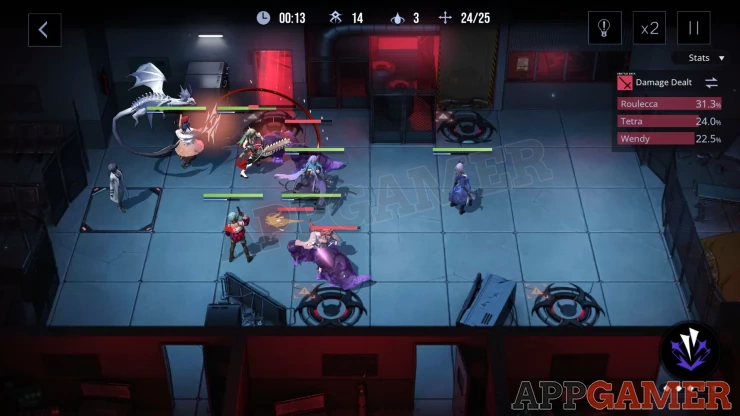
You can also move around characters during combat but there’s a section amount of “movement actions” that you can do in a battle so try to do this only as necessary. Once the action limit has been reached, your characters’ last position will be permanent for the entirety of the battle.
Finally, both the chief and the deployed characters have access to triggered abilities. The chief has several unlockable abilities but you can only equip one. However, you’re free to switch these abilities before the battle starts. Your characters also have individual ultimate attacks with varying effects. Knowing about their attack effects will greatly help you decide on the fly when and where they need to be activated.
2. Character Roles (Classes)
There are six character classes or roles in the game. Each class has their own strengths and weaknesses. Their attack range and skill types determine their role in the battlefield - specifically their actual position on the field and the characters you’ll deploy.
| Role/ Class | Description |
|---|---|
| Endura | The tanks of the game; effective in blocking enemies and absorbing damage |
| Umbra | The game’s answer to the assassin archetype; highly mobile and capable of dealing effective damage. |
| Arcane | These are the game’s mages and spellcasters, capable of dealing AoE explosive damage |
| Fury | The frontline fighters, capable of directly engaging enemies and dealing damage |
| Reticle | Ranged units that can deal continuous damage to targets from a distance. |
| Catalyst | Support units that provide healing and buffs to allies, and apply debuffs to enemies. |
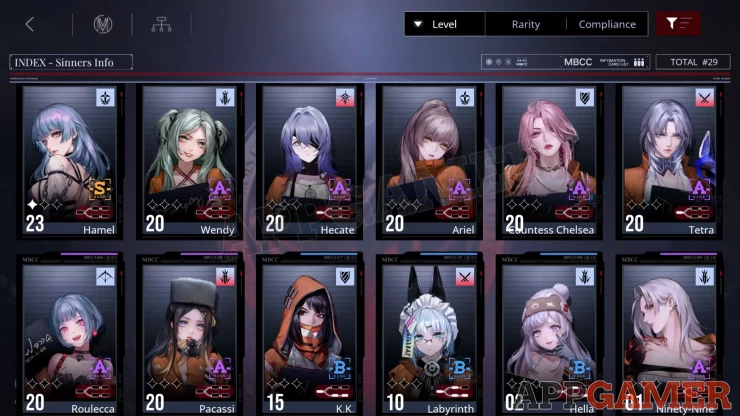
3. Team Formation
If you played games with team formation mechanics, then it’s already a given that tanks and fighters take the vanguard position of the party, while ranged and support units stay in the middle and rear positions. There are other mechanics at play in the game but knowing the basic formation is a good start as you learn along the way.
Even if you follow your team formation, don’t forget that the actual battlefield requires dynamic positioning so you may need to move your units around as necessary. It’s even a good strategy to move a non-vanguard unit to the front to stall an enemy while you’re waiting for a healing ultimate or a powerful finisher to charge up and change the tide of battle.
4. Bring units that can destroy Cores
There are certain units with a red color in their role icon. This indicates that the character is capable of destroying enemy cores. Certain enemies like strong monsters and bosses have cores in them. Only characters with the red role icon can destroy these cores, temporarily stunning the enemy and rendering it vulnerable to bonus damage. Enemies with intact cores are usually hard to deal with since they’ll have damage resistance and will continue to be active with their nasty abilities. It’s a good idea to bring at least one character that can destroy cores. You’ll be given access to two free units like Hecate and EMP early in the game so you can build and keep them in your main team until you get replacements for them. Keeping them until mid or late game isn’t bad either.
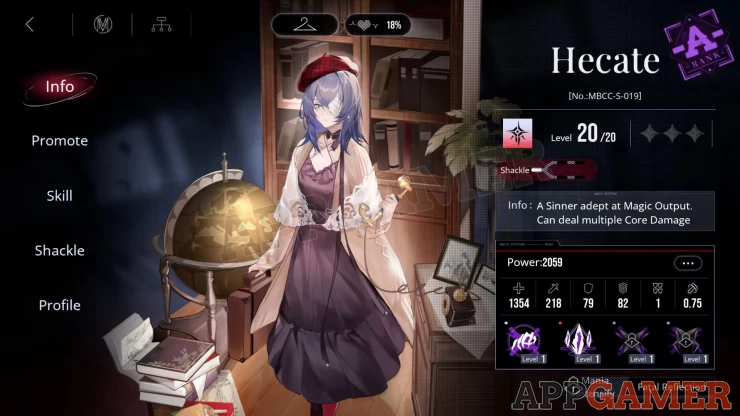
4. Manage your Stamina
Most of your activities will be determined by the Stamina system. This functions as a limiter which is pretty common in mobile games, as you’re not really supposed to grind for hours on a mobile game. 1 Stamina is restored automatically every 6 minutes and your max stamina is determined by your player level. If the stamina has reached the max stamina value or exceeded it, the automatic stamina restoration will be temporarily halted until the stamina value goes below the max stamina.
You’ll also get free Stamina whenever your player level increases and from a regular scheduled stamina delivery at noon and evening. You can claim that from the Bureau option in the main menu. It’s pretty easy to have surplus stamina early on so if you don’t think you can play for a while, it’s better to spend them in raiding resource stages in The Rust where you can gather DisCoins (gold), Mania Essence (level up material), Elemental Particle or Fluids (limit break materials).
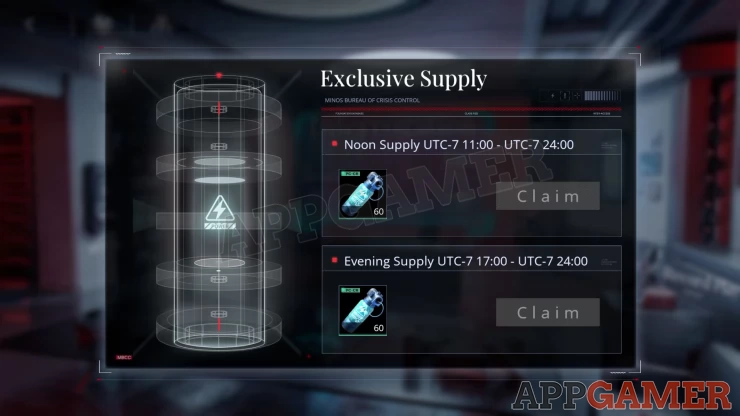
You just need to clear a stage once while completing the Special Mission (usually not losing any SAN or life during the battle) and you’ll be able to Raid the same stage moving forward. Raiding is where you’ll spend stamina to instantly complete the battle and receive the corresponding rewards immediately. If you fail or restart a battle, no stamina is consumed.
5. Effective Gacha Pulls
If you’re playing other gacha titles, then you’ll be familiar with the basics of the gacha system. If this is your first time, we’ll cover the system extensively in a dedicated page within this online guide. To put it simply, a gacha system is similar to lootboxes or lottery where you spend currency or tickets in hopes of getting a random Sinner or character in the game. The rarer the Sinner, the lower the probability of getting it.
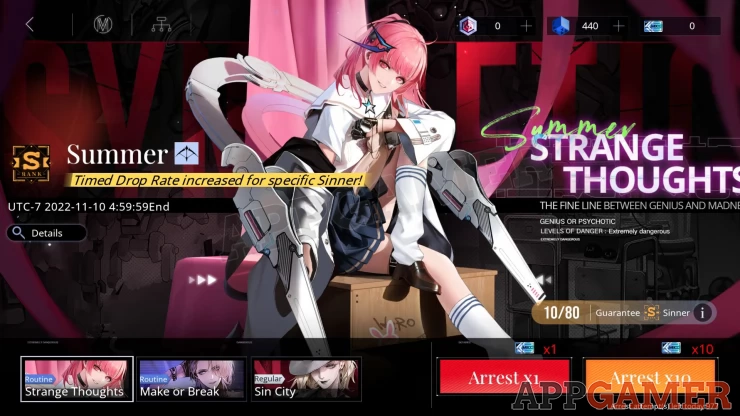
“Pulling” for a character is the same as recruiting or summoning them; in the game, it’s called “Arrest”. To increase your roster and to get a chance to get even more powerful and rarer Sinners, you’ll need to play regularly to gain the necessary resources to make more Arrests (recruitment attempts).
Path to Nowhere’s gacha system is simplified since you can get characters in the game; there’s no gacha mechanic for equipment (since gears and equipment are non-existent in the game) or other items that share the same pool of rewards. The game also has a “Pity System” that increases your chances of getting a rare Sinner if you fail to get any after X number of Arrests. The system also guarantees a S-rank sinner on the 80th arrest, just in case you fail to get any S-rank unit for the last 79 arrests. The guaranteed pity counter gets reset back to 0 if you manage to pull for a S-rank sinner before reaching the guaranteed counter. (80th)
As mentioned above, we will have a dedicated page tackling the game’s Gacha system so check that out if you need further information.
6. Study the Map and Enemy Spawn Points
Before starting the battle, you can check the enemy spawn points and see which enemy types will be coming out from them, as well as their paths. This will help you decide where to position your units. You also need to consider other features of the map like barriers and special tiles that provide buffs to your units. Also, it’s recommended not to spread your units far from each other so they can cover each other’s attack ranges. If you have a support unit that buffs teammates around here, you also need to consider your positioning to take advantage of that resource.
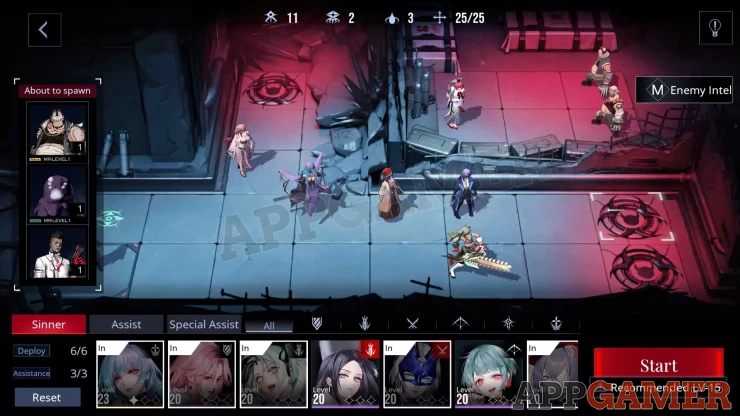
7. Improve your Sinners
Improving your Sinners is integral to your progress in the game. Without properly investing in them, you won’t be able to clear the increasingly difficult stages and instances the game will eventually offer, thus limiting your gameplay experience. Thankfully, character management in the game is pretty simplified and straightforward. Here’s the overview of what you can do to improve your Sinner’s overall combat ability.
* Promote - Level up and limit break
* Skill - Level up the Sinner’s skills (some skills are locked until the Sinner is upgraded to Phase 2)
* Shackle - If you get copies of the same character, you’ll obtain their Marks. Use a corresponding Mark to unlock the Sync Rate stage, improving the sinner’s abilities and providing them with additional buffs and beneficial effects to the character or team. Each character has five Sync Rate stages.
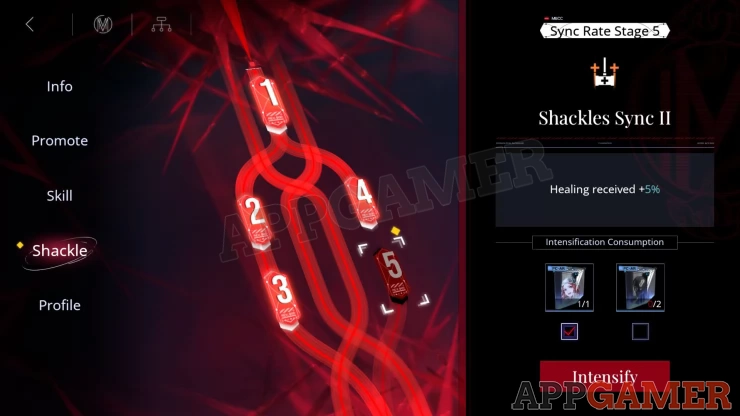
We will extensively cover the various methods below in a dedicated page within our guide so please check that out.
8. Collect your freebies
Don’t forget to collect the free rewards available in the game. This will give you a good head start. Here are some sources:
* Login Rewards
* Surveillance Order (battle pass)
* New player rewards
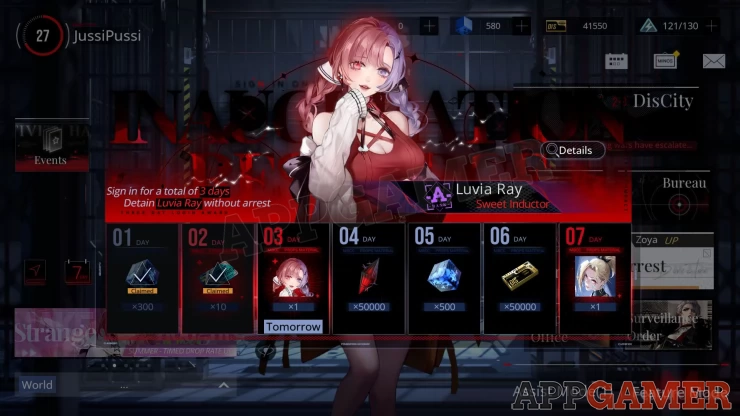
That concludes our Beginner’s Guide in Path to Nowhere. Please check out our online guide for the game and other articles for more Path to Nowhere content!
We have questions and answers related to this topic which may also help you: Show all
 Vhayste started writing free guides and walkthroughs in 2006 for several online gaming sites. He has written hundreds of guides covering games from a wide variety of genres across different platforms. He's an avid JRPG and mobile gaming fan, and regularly plays games on the PC, Steam Deck, PS5, and mobile platforms. He strives to continue making comprehensive and easy-to-follow guides for his readers.
Vhayste started writing free guides and walkthroughs in 2006 for several online gaming sites. He has written hundreds of guides covering games from a wide variety of genres across different platforms. He's an avid JRPG and mobile gaming fan, and regularly plays games on the PC, Steam Deck, PS5, and mobile platforms. He strives to continue making comprehensive and easy-to-follow guides for his readers.